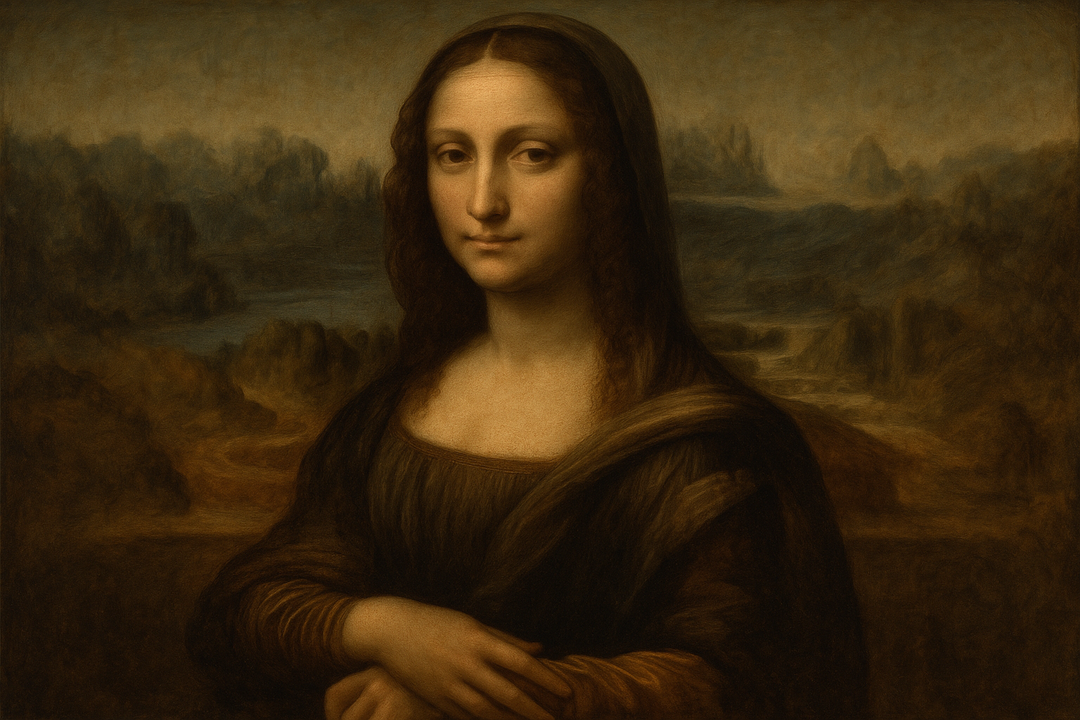What is Scientific Botanical Illustration?
Botanical illustration is the scientifically accurate depiction of plant species' form, color, and morphological details, created specifically to document diagnostic features for species identification and taxonomic study. Unlike decorative flower painting, the primary purpose of botanical illustration is to provide precise visual documentation that enables botanists, horticulturists, and researchers to accurately identify, classify, and study plant species.
Botanical illustrations serve as essential scientific tools that appear in taxonomic publications, field guides, and research papers. As demonstrated by Kew Gardens, the artist's plate forms part of the formal definition of a plant species, with recent work by Lucy T Smith being instrumental in the 2022 discovery of a new waterlily species.
Annotated Botanical Illustration Examples
Professional botanical illustrations must include specific anatomical details and annotations to meet scientific standards. The following examples demonstrate how botanical illustrators document different plant structures:

Scientific Botanical Illustration: Annotated Plant Structure
Botanical Illustration vs. Botanical Art vs. Photography
Understanding the distinctions between these three approaches is crucial for anyone interested in plant documentation. Each serves different purposes and audiences:
| Aspect | Scientific Botanical Illustration | Botanical Art | Photography |
|---|---|---|---|
| Primary Purpose | Scientific documentation and species identification | Aesthetic appreciation with scientific accuracy | Visual record of specimen at specific moment |
| Accuracy Priority | Morphological precision essential | Scientific accuracy important but balanced with aesthetics | Limited by lighting, angle, and specimen condition |
| Detail Level | Shows all diagnostic features, including microscopic details | Focuses on visually appealing aspects | Limited to visible surface features |
| Perspective | Multiple views: habit, details, cross-sections, life stages | Single artistic composition, often with habitat | Single viewpoint, fixed perspective |
| Scientific Value | High - can serve as type specimens | Moderate - scientifically informed | Limited - supplementary evidence only |
| Target Audience | Botanists, researchers, taxonomists | Art collectors, general public, gardeners | Researchers, documentation, general public |
| Time Investment | Weeks to months per illustration | Days to weeks per piece | Minutes to hours per session |
The Ancient Origins: Earlier Than Previously Known
Dioscorides and the Birth of Illustrated Botanical Documentation
The earliest documented botanical illustrations trace back to 50-70 CE, when Greek physician Pedanius Dioscorides wrote "De materia medica," a five-volume pharmacopoeia describing approximately 600 medicinal plants. This groundbreaking work was "widely read for more than 1,500 years until supplanted by revised herbals in the Renaissance, making it one of the longest-lasting of all natural history and pharmacology books."
The most famous surviving copy is the Vienna Dioscurides (Codex Vindobonensis), created around 512 CE as an illuminated Byzantine manuscript for Princess Anicia Juliana. This "masterpiece of book art" is registered with UNESCO's Memory of the World Programme as "the most important pharmaceutical source of the Ancient World."
 |
 |
Evolution of botanical illustration over time
The evolution of botanical illustration over time can be divided into several key phases:
- Ancient origins (50-70 CE): Dioscorides' "De materia medica" established the foundation for scientific plant documentation, featuring illustrated descriptions of medicinal plants that remained authoritative for over 1,500 years.
- Early botanical illustration (16th century): Renaissance herbals built upon ancient foundations, with improved printing techniques allowing for better reproduction of plant illustrations used in herbal medicine.
- Development of accuracy and detail (17th and 18th centuries): Carl Linnaeus and botanical illustrator Georg Dionysius Ehret revolutionized plant classification, using botanical illustration to establish taxonomic standards.
- Aesthetics and art (19th century): Artists working with institutions like Kew Gardens, such as Pierre-Joseph Redouté and John James Audubon, created detailed and accurate descriptions of plants that were also works of art.
- Digital age (20th century - present day): Contemporary applications include conservation documentation and climate change research, with digital tools offering new possibilities for precision while adhering to established principles.
Modern Applications: Conservation and Scientific Research
Critical Role in Conservation
There is an increasing interest in the changes occurring in the natural world and in the central role plants play in maintaining healthy ecosystems. A sense of urgency has developed in documenting today's plant life for future generations. As plant species face threats from habitat destruction and climate change, accurate illustrations help conservationists track changes over time and contribute to awareness campaigns aimed at preserving endangered species.
Supporting Taxonomic Research
Kew Gardens maintains extensive databases including Plants of the World Online, which links taxonomic data with botanical illustrations to provide comprehensive species information covering identification, distribution, traits, conservation, and molecular phylogenies.
Advantages Over Photography
Photography and film may play a role in expeditions, but they can never replace the accuracy of an illustration. Photography can't bring each unique detail of a plant to life; whereas an artist can hone in on the way a leaf is attached to a stem, the formation of spikelets or hidden features beyond what's in the photo.
South African Excellence in Botanical Illustration
Gillian Condy: A Master of the Craft
South African botanical artist Gillian Condy, born in Nairobi, Kenya in 1952, represents excellence in contemporary botanical illustration. She has illustrated more than 200 plates for Flowering Plants of Africa and contributed to various South African National Botanical Institute publications, including eight plates for Curtis's Botanical Magazine.
Condy's extensive achievements include RHS gold medals, the Jill Smythies Award from the Linnean Society, five paintings in the Shirley Sherwood collection, and works in the HRH Highgrove Florilegium. She was commissioned to paint Mandela's Gold, a Strelitzia hybrid developed at Kirstenbosch National Botanical Garden, which she personally presented to Nelson Mandela.
Botanical Elegance: Pierre-Joseph Redouté Prints
Bring the beauty of a Victorian botanical garden into your dining room with these exquisite floral prints by Pierre-Joseph Redouté, the renowned "Raphael of flowers". These delicate yet striking illustrations add a touch of refined natural beauty to your walls, perfect for creating a serene and sophisticated dining atmosphere:
Pierre-Joseph Redouté: The "Raphael of Flowers"
Pierre-Joseph Redouté (1759-1840) was a Belgian botanical artist considered one of the greatest botanical illustrators of all time. He is best known for his detailed and accurate illustrations of flowers and plants, which were used in scientific publications, but also found a place in art galleries and private collections.
Redouté's most famous works include "Les Liliacées" (1802-1816) and "Les Roses" (1817-1824), both of which feature detailed and accurate illustrations of flowers and plants, as well as brief botanical descriptions. Another of his famous works is "Les Iris" (1806-1818), which was dedicated to the genus iris.
John James Audubon: Beyond Birds
French-American naturalist and painter John James Audubon (1785–1851) is renowned for his exquisite depictions of birds and animals. His major book, "The Birds of America," regarded as one of the most significant ornithological studies ever done, is what made him famous. Audubon was also a talented artist of botanical paintings.
🌿 Test Your Botanical Illustration Knowledge!
Think you've mastered the art and science of botanical illustration? Take our quiz to find out!
Scientific Requirements and Professional Standards
Essential Technical Skills
Professional botanical illustration requires understanding plant morphology, growth cycles, and anatomical structures that influence visual representation. Botanical accuracy demands systematic observation methods that capture anatomical accuracy while creating visually compelling compositions.
Professional Standards and Organizations
Major Professional Societies:
- American Society of Botanical Artists (ASBA): Founded in 1994, grown to nearly 2000 members in 39 countries, organizing international juried exhibitions and educational programs
- Philadelphia Society of Botanical Illustrators (PSBI): Educational and philanthropic mission to celebrate artistic development and bring botanical illustration to diverse audiences
- Royal Horticultural Society (RHS): Awards gold medals for excellence in botanical illustration
- Society of Botanical Artists (SBA): UK-based organization promoting botanical art standards
How to become a botanical illustrator
Becoming a botanical illustrator typically requires a combination of formal education and experience in art, as well as a specific interest and knowledge of plants. An excellent place to start would be to pursue a degree in fine art, illustration, or a related field, focusing on botanical illustration. Many colleges and universities offer programs that can provide the necessary training in art techniques and the biology of plants.
Contemporary Botanical Artists
There are many contemporary botanical artists working today who are creating beautiful and accurate illustrations of plants and other botanical subjects. Some notable examples include:
- Wendy Hollender is an American botanical artist and illustrator known for her detailed and realistic illustrations of plants and fungi. She has illustrated several books on botanical subjects, including "Botanical Illustration in Watercolor" and "Botanical Illustration for Beginners."
- English artist Cherryl Angela Fountain, born in 1950, specializes in still life, landscape, and botanical subjects.
- Botanist and botanical artist Hertha Ludovica Bokelmann (1915-2005) was of Spanish descent and raised in South Africa. The Compton Herbarium at Kirstenbosch National Botanical Garden houses around 600 of her illustrations, mainly from the Eastern Cape and Tsitsikama.
- Gillian Condy: Born 1952. Artist with formal SANBI status since 1983. She received her M.A. from the Royal College of Art and has been included in over 180 international exhibits.
Resources for understanding the development of botanical illustration
Books
Many books are available on the history and techniques of botanical illustration. Some notable examples include "The Art of Botanical Illustration" by Wilfrid Blunt, "The Botanical Illustrator's Handbook" by Sally Pinhey, and "Botanical Illustration: A Complete Guide to techniques" by Leigh Ann Gale.
Websites and Organizations
Several websites and organizations provide information and resources for botanical illustrators. The American Society of Botanical Artists (ASBA) is a nonprofit organization that promotes the art and science of botanical illustration. The society offers resources, workshops, and opportunities for botanical illustrators to connect and share their work. The Royal Horticultural Society also has extensive resources for botanical illustration.
Workshops and Classes
Many workshops and classes are available for those interested in learning more about botanical illustration. These workshops and classes are usually led by experienced botanical illustrators and provide hands-on instruction in the techniques and practices of botanical illustration. Some notable examples include the workshops offered by the ASBA, the Royal Horticultural Society, and the New York Botanical Garden and Kew Gardens.
Final Thoughts
In conclusion, botanical illustration is a fascinating field that combines the art of illustration with the science of botany. It has a long history dating back to ancient times with Dioscorides' work in 50-70 CE and continues as an essential tool for botanical research, education, and conservation in the modern era.
The process of botanical illustration requires a combination of artistic skill and botanical knowledge, with scientific accuracy taking priority over aesthetic beauty. Many resources are available to those interested in learning more about the history, techniques, and contemporary practices of botanical illustration.
Furthermore, botanical illustration plays a crucial role in modern conservation efforts and climate change research. As environmental issues are at the forefront, botanical illustration serves as vital tools for scientists, educators, and conservationists alike. An example is the botanical wall art from our shop, which is a great way to bring nature into your home or office. We provide a wide range of botanical illustrations that you can use to decorate any space, and they are not only beautiful but also educational, as they are accurate representations of the plants they depict.















